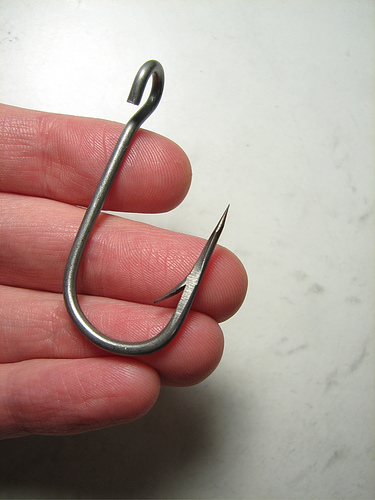5 Components of a Perfect Scene
A lot of writers sit down to write a scene with a general idea of what they want to have happen (action) in the story. But to create a perfect scene, you need to consider a whole lot more than that.
Novels are a string of scenes, so they need to connect together beautifully like a strand of pearls.
Of course every scene needs to serve a specific purpose in your story, and the type of scene should be determined by where the scene falls in a story and what type of action preceded. If your character just experienced something startling, this new scene needs to show her reaction or how she processes this new turn of events.
Some scenes are low energy, comtempletive scenes. Others are high energy, full of action and fast developments. But if most of your scenes are the same type, they’ll get tedious to readers. Be sure you learn what the ten key scenes are and how to fill in around those scenes with proper action-reaction. You can use my handy chart to help you lay out those scenes (but be sure to study Layer Your Novel).
5 Essential Components
Let’s say you know exactly what the purpose of your scene will be. You may have your protagonist’s best friend turn on him. You may want to introduce an accident or some violence to upend things. You may be bringing a love interest on stage, or have an ally try to stop your character from making a bad decision.
Now that you have the purpose in mind for your scene, what next? Let’s look at the first five key components to crafting that scene.
- The high moment. Your scene has to have a key moment that encapsulates the point of your scene. Think carefully about what that moment should be. It’s usually a reveal—a clue, a new bit of information, a reveal of character that impacts the story. It can be big or subtle.
Moments aren’t about big action but about significance. What is significant to your POV character for that scene. A high moment can be a complication that shows up, a reversal (something happens opposite to what the character expected), or a surprise twist to the plot.
- Start in the middle of action. Some years back on this blog we spend a month covering the fatal flaw of “nothin’ happenin’.” The popular term in medias res means starting in the middle of something. Remember last week I gave the scene example of character John waking up and getting dressed, then heading to work? That may sound like the scene is starting in the middle of things. John is waking up and getting going in his day, right?
Nope. The idea here is to start in the middle of something interesting that’s going on. Something that makes the reader wonder just what has been happening up till now.
Imagine walking into a room to find two people in the midst of an argument. You know you’ve missed something, but you’re intrigued to find out just what. That’s the feeling you want to get with your scene openings. I suggest thinking about that high moment, then starting about 15-20 minutes of screen time earlier. That time factor will vary depending on your scene, certainly, but it’s a good rule of thumb when considering at what moment to open with.
- Establish the POV character and stay in that POV. Make sure to be clear whose POV this scene is in by the first or second paragraph. It may be obvious, such as when writing in first-person POV. But even with first person, it can be easy to fall into explanation and lengthy narrative that feels out of POV. So make that character present to the reader right away.
“Rule” is: only one POV per scene. So stick with that one character, showing only what she can see, think, or feel. If you need to get into another character’s head, wrap up that scene, do a scene break (put a # in the middle of a blank line), and then start the new scene.
- Establish the setting. This is one component that is frequently ignored. Make it clear where this scene is taking place. Don’t do an info dump of details, but rather show the setting through the POV character. I’ve written dozens of posts on the importance of setting, and I have to emphasize here—it’s almost always undertreated in every manuscript I critique. You don’t need much, but it’s essential. That includes a feel for the weather, time of day and year. Sensory detail is critical in order to bring a scene alive, and the most evocative details are those dealing with setting.
- Consider the conflict. Conflict is story. Ideally, you want conflict oozing out of every page. So take some time to think about the conflict inherent in your premise and plot.
The character arc requires inner conflict, which is really the character’s struggle as he is forced to grow and learn and change through the story. The outer conflict is embodied by antagonists and nemesis characters who create interference and obstacles for the protagonist as he goes after his goal. Outer conflict can be incidents that impact any or all of your characters.
Just know this: if your scene is lacking conflict, it will fall flat.
Examining your scenes with these five key components in mind will help you write solid scenes. But it’s just a start. There’s a whole lot more to great scene structure. Be sure to search for the many (many!) posts on this blog on this topic of scene structure. Make it your aim to master the art of scene writing!
If you’re struggling or unsure you’re on track, hire me! Contact me here to discuss your project and what concerns you have about your structure.
What do you struggle most with regarding these 5 components of a perfect scene? Share in the comments.
Featured Photo by Randy Fath on Unsplash












Hi Susanne, how are you? Been a long time since I’ve checked in with you. The Covid-19 pandemic and this unbelievably insane presidential election has jolted our senses and emotions in so many ways. I’m now looking forward to getting some more writing done in the near future. Winter has always been my best season for writing. There’s nothing like curling up in front of my woodstove and letting the words write themselves. I miss that…it’s been awhile.
I loved your talk about the five essential components for creating a perfect scene. What you said all makes perfect sense. I especially liked how you emphasized making the “setting” a priority. Setting pulls you into a scene, like one might be pulled into a painting. It puts you right there.
And I’ve always been one to like the stories that BANG!!….plop you right into the action. For a reader, t’s hard to pull one’s attention away from that scenario. Always been my favorite way to either start a story, or read a story that begins like that.
I think it’s really odd how some styles of writing get to be considered outdated. I mean, I get it, there’s a certain style of story that one might find in The New Yorker that one might not find in another type of magazine, but I always thought if it’s good, it’s good, no matter the style. I guess we are all somewhat a product of what type of stories or novels we each enjoy most. And me –– being a fan of John Updike, T.C. Boyle, Shirley Jackson, Raymond Carver, Tobias Wolff, Flannery O’connor, Annie Dillard –– just to mention a few, will probably pull something from some or all of those writers in my style of writing. I don’t even know if I consider myself to have a style, that is, unless someone reads my work and comments on it.
I hope you are well Susanne. And thank you again for the precious advice you always pass on to me that I thoroughly enjoy.
My Best,
Michael
Thanks so much for sharing that, Michael!
I was initially skeptical when I started reading the second component of starting in the middle of the action. But as I thought about it for some of my chapters, I realized what a great idea this is. I’m definitely putting this on my edit to-do list.
Glad to hear this is helpful!
What excellent tips you have shared here, C.S.! Thank you!